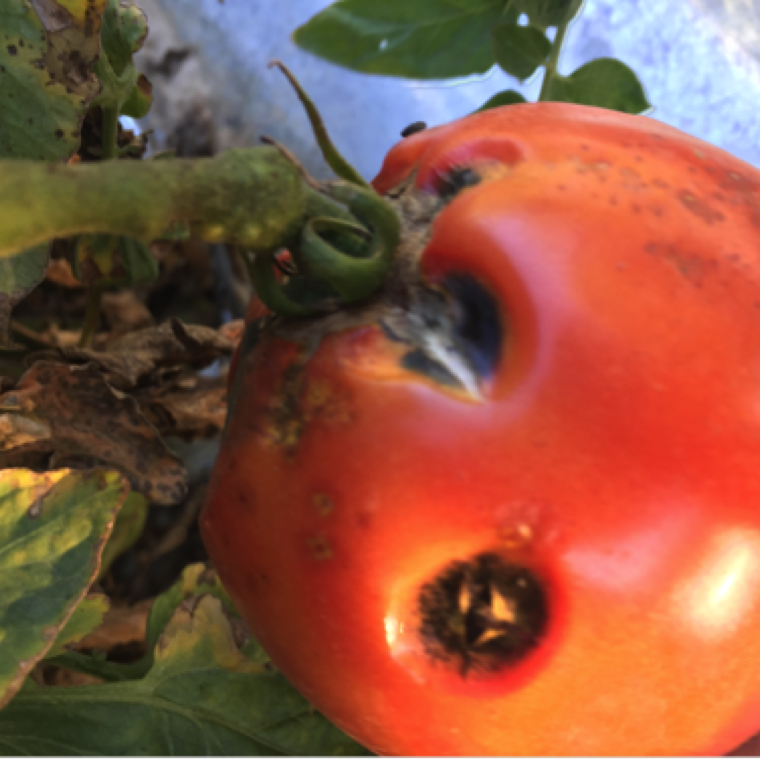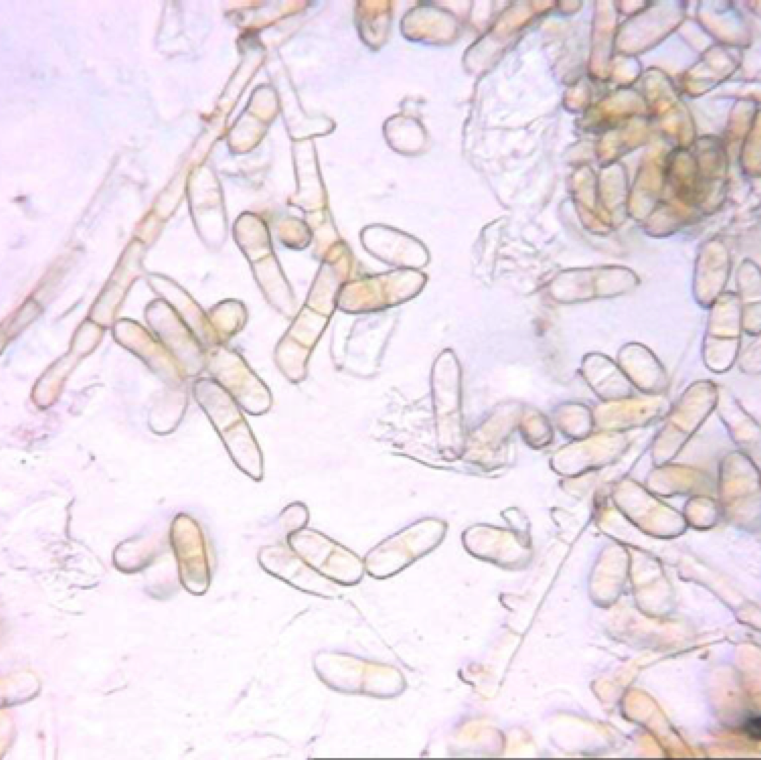

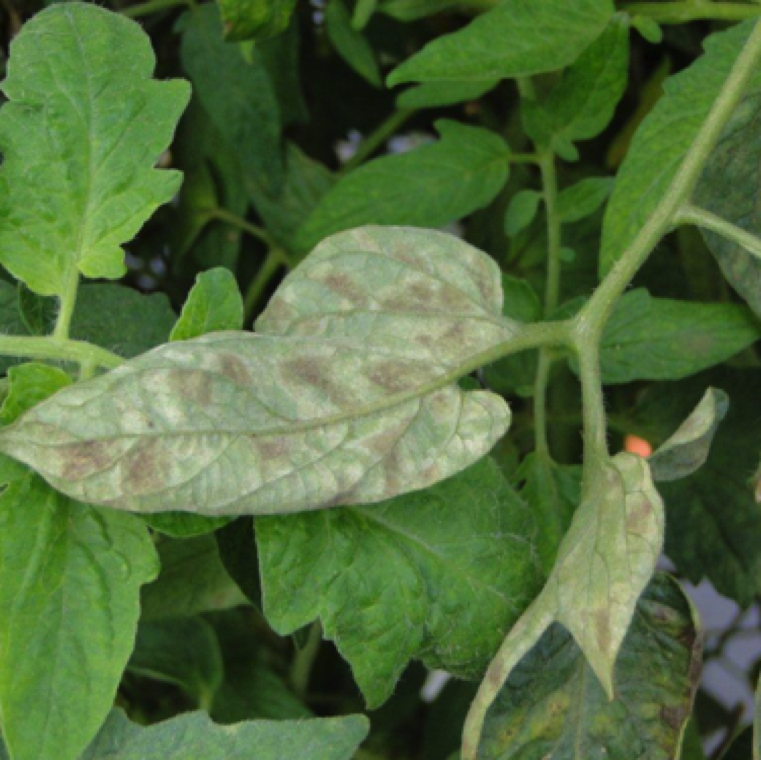
Leaves affected with leaf mold is mostly green in greenhouse or in other protected system tomato production. The disease usually starts on older tissues, and symptoms appear on younger leaves later.
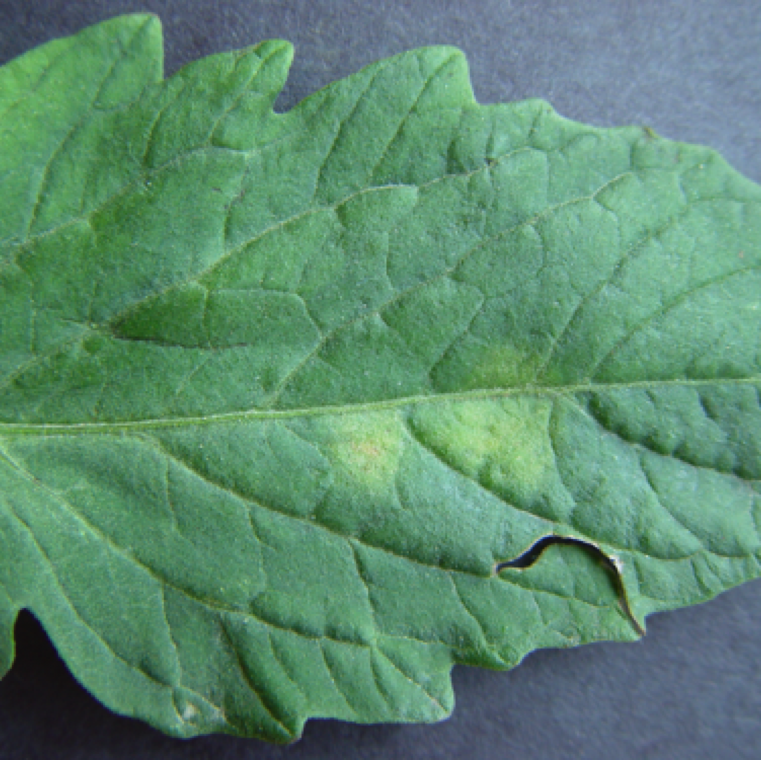
Leaf mold symptoms starts as a light green to yellow spots on upper side of the leaves which can be noticed also on the underside of the leaves.
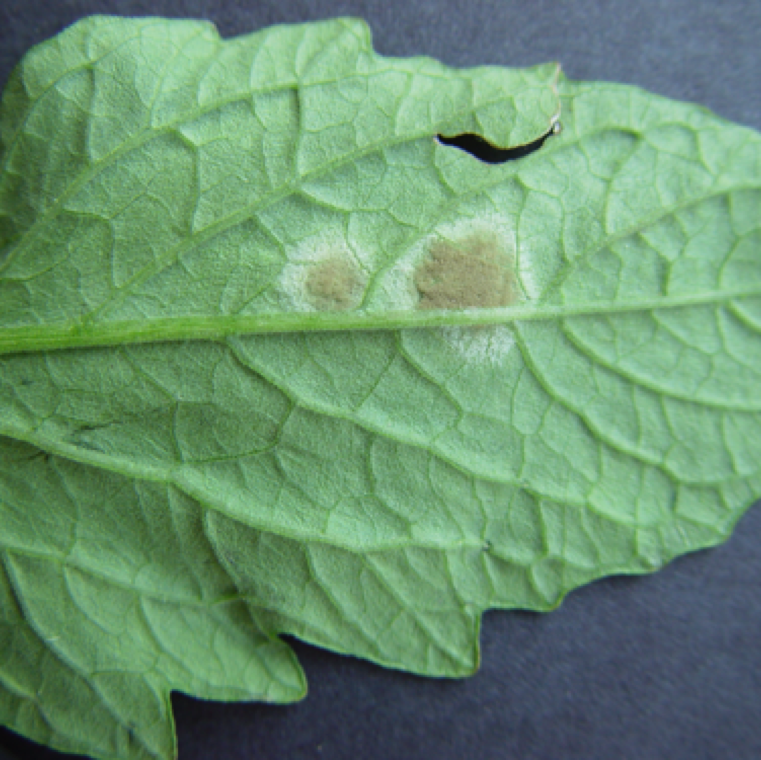
On the underside of the leaves velvety and tan appearance of the infected sections can be noticed as the disease advances, which may be absent early on.
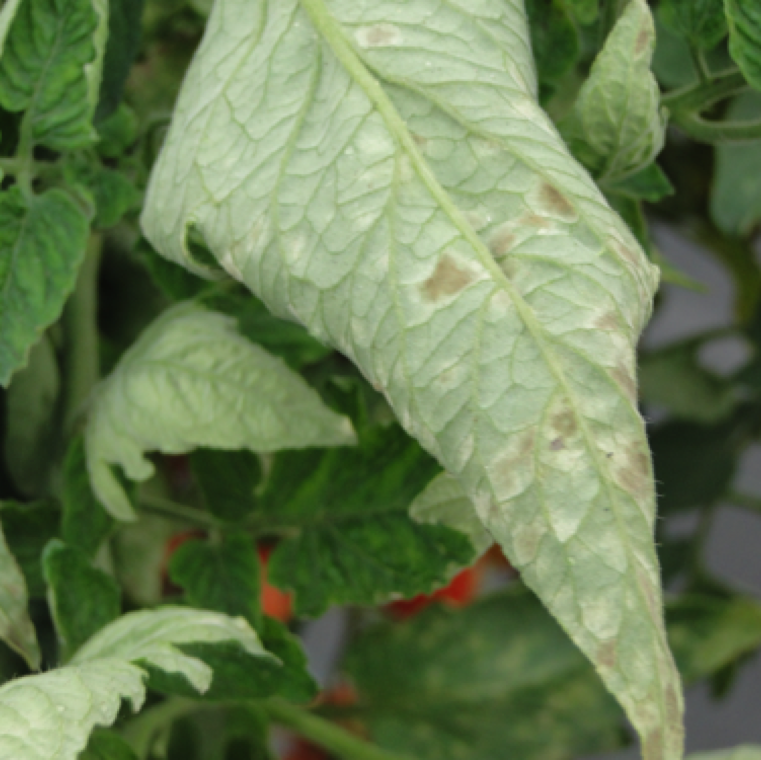
The spots on the underside of the leaves can change to dark olive green color. The leaves can curl and wilt and the disease can cause premature drop of leaves.

The pathogen can cause fruit rot during cool wet conditions especially prevalent during late fall season in North Florida. The lesions are round, oval, sharp edged or irregular with distinct black fungal growth.
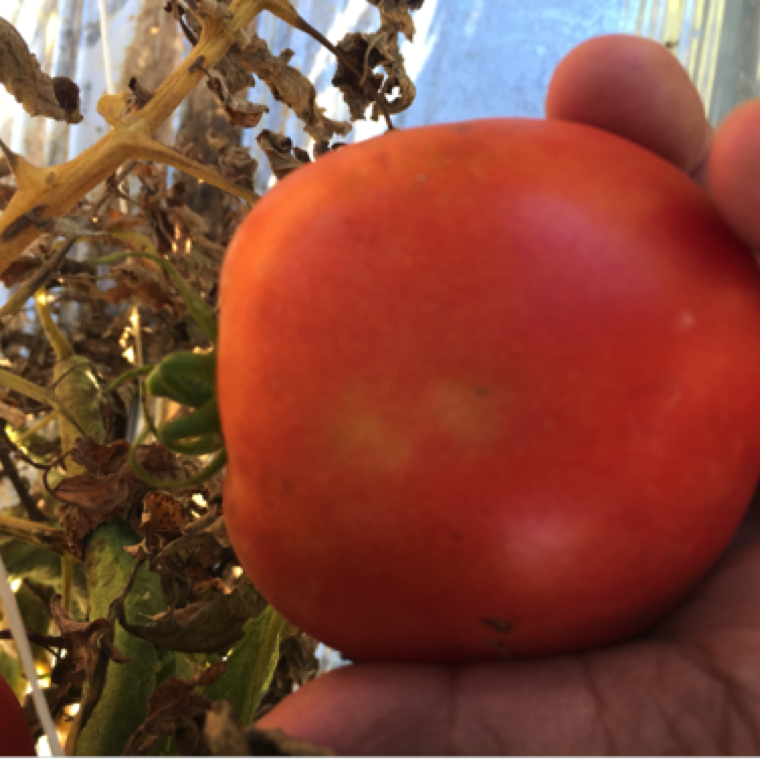
The symptom starts with small yellow blotches on ripe fruits, but symptoms can also occur on green fruits. These symptoms typically start from the stem end of the fruit.
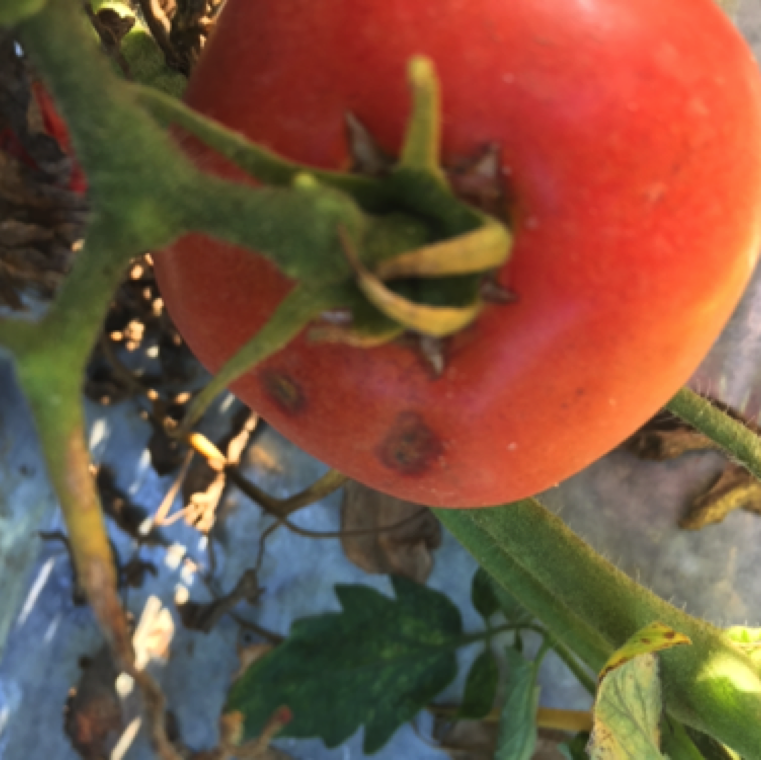
The lesions becomes soft and sunken and at this stage may look like early stages of fruit infection due to Anthracnose disease. The lesions enlarge and radiate through the fruit.
LEAF MOLD
Fungal causal agent: Passalora fulva (syn. Fulvia fulvum)
Tomato diseases
